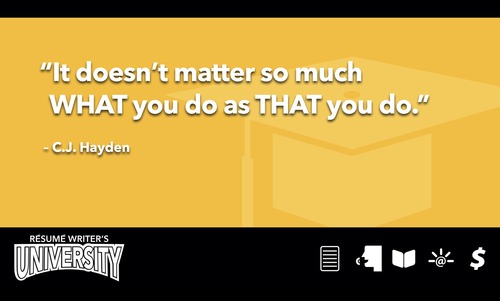
By C.J. Hayden
Author, Get Clients Now
There's more marketing hype published on the Internet in one day than P.T. Barnum generated in his lifetime. Like a worm swallowing its tail, the Internet marketing beast feeds mostly on itself. The vast majority of what appears on the Internet about marketing is designed to help you market products and services sold and delivered exclusively on the Internet.
So what does that mean for the independent professional whose web presence is primarily aimed at selling his or her own personal services? You know, services delivered the old-fashioned way, by humans interacting face-to-face or at least voice-to-voice. At best, the average professional is likely to be overwhelmed by the sheer volume of Internet marketing advice available. At worst, he or she is being seriously misled by it.
The problem is that marketing your own professional services is simply not the same as marketing a retail product or an anonymous business service. You can't sell corporate consulting like you do web hosting; nor can you sell life coaching the same way you do an e-book. If you try to market yourself by following advice designed for marketing Internet products and services, you're likely to make some serious mistakes.
Here are five Internet marketing myths that may be hazardous to the health of your business.
Myth #1 – It all starts with a great web site.
Actually, the place where it starts is with a well-defined service. If you don't have a crystal clear picture of who you are marketing to and exactly what you're selling them, the best web site in the world won't get you clients. Before you even think about building a web site, you should know who your target market is, how to describe your professional specialty, and what specific benefits your work provides for your clients.
The content of your site is much more important than the design. Yes, you should have a professional-looking site, but a brilliant design and dazzling graphics won't pay off anywhere near as well as a clear explanation of why a client should work with you. Useful material such as articles, assessments, and other samples of your expertise will go much further to persuade prospective clients than flash intros and interactive menus.
Myth #2 – More traffic translates to increased profits.
The only result that more traffic to your web site guarantees you is increased bandwidth use by your web host. Before spending money on banner ads, web directories, or pay-per-click listings to drive more visitors to your site, you need to be sure that they'll want to do business with you once they get there.
Ask your colleagues and current clients to critique your site. Do they understand what you are offering? Can they see concrete benefits to your target audience? Revise your site based on their feedback. Then personally invite some prospective clients to visit and touch base afterward. Do your prospects seem more inclined to do business with you after seeing your site? If so, you're on the right track. If not, you still have more work to do.
Myth #3 – Do whatever it takes to build your list.
There's no question that a substantial opt-in mailing list is a valuable marketing asset, but the quality of names on your list is much more important than the quantity. Acquiring names through giveaways of other people's material, trading lists with joint venture partners, or purchasing them from a vendor rarely provides qualified buyers truly interested in your services.
Absolutely, ask your site visitors and people you meet to join your mailing list and offer them something of value in return. A well-written ezine, helpful report, or informative audio are all effective premiums. But, your premium should be directly related to the services you provide and also serve to increase your professional credibility. Names acquired from promotional gimmicks or unknown sources seldom turn into paying clients.
Myth #4 – Killer copy is the secret to sales.
Hype-laden web copy may be effective in selling certain info-products or courses, but it hardly inspires trust. You're not going to convince anyone to hire you individually as a consultant, coach, trainer, designer, or financial advisor by offering "not one, not two, but three valuable bonuses" as if you were selling steak knives on late-night TV.
Your Internet marketing persona should reflect the same professionalism as the work you do with your clients. If writing marketing materials isn't your forte, by all means hire a professional copywriter. But be sure you hire one with experience writing for professionals like yourself. The copy on your web site should inspire feelings of confidence about your abilities, and communicate your reliability and solid qualifications.
Myth #5 – Just follow the winning formula and you will get rich.
There's only one surefire recipe for Internet wealth I know of, and that's the business of selling surefire recipes. There seems to be an infinite number of buyers for every new get-rich-on-the-net scheme that is invented, but paradoxically, a precious few people actually making money on the web.
The Internet may be a different medium for marketing professional services than making calls, writing letters, or speaking to people in person, but the same time-honored principles still apply. There is no new winning formula. The secret to landing clients is what it always has been -- build relationships and get people to know, like, and trust you.
If your web site, ezine, and other Internet-based activities contribute to building long-term, trusting relationships with prospective clients and referral sources, you'll get business on the web. But if you blast your message out to anyone who will listen, aiming for a quick profit, the Internet won't bring you any more business than standing on a street corner with a megaphone.
~~~~~~~~~~~~~~~~~~~~~~~~~~~~~~~~~~~~~~~~~~~~~~~~~~~~~~~~~~~~
Copyright C.J. Hayden.
To subscribe to the "Get Clients Now!" e-newsletter
visit http://www.getclientsnow







